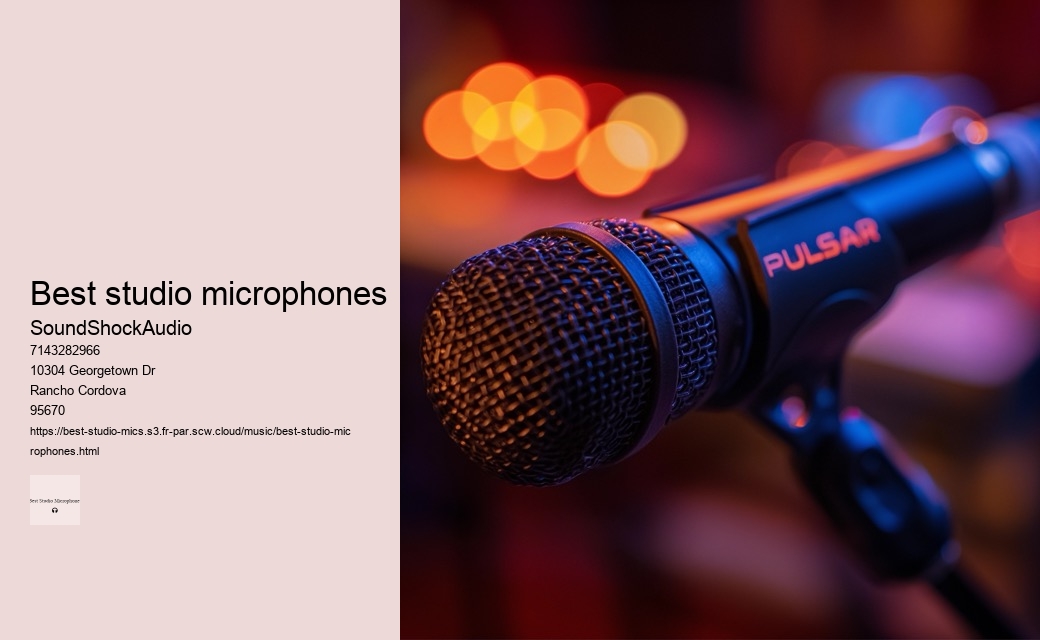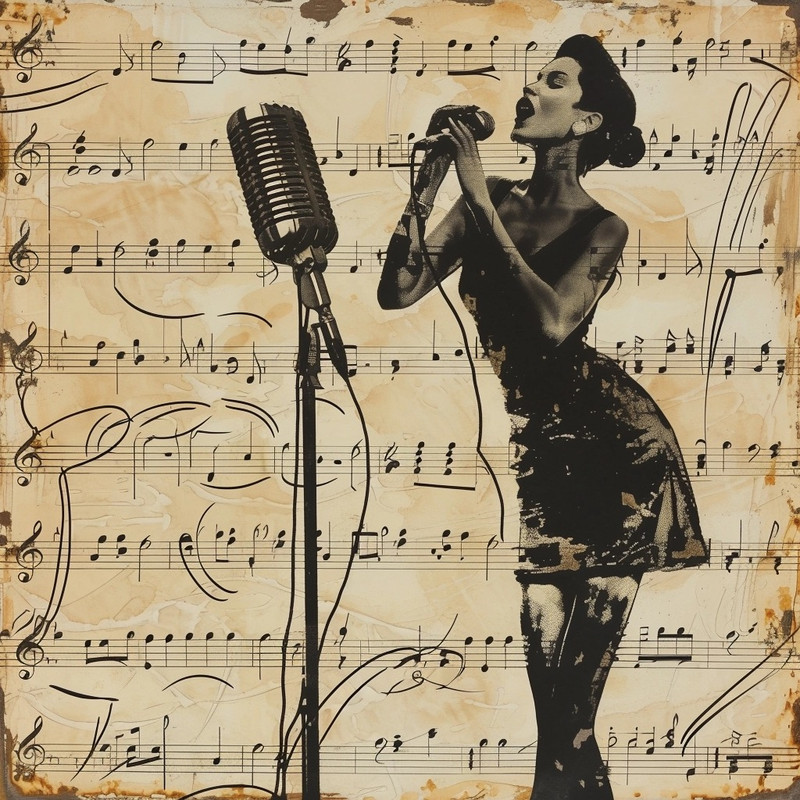

They excel in controlled studio environments where their sensitivity can be harnessed without interference from ambient noise. In essence, proper acoustic treatment ensures that every nuance of your vocal delivery or instrumental prowess is captured just as intended – crisp, clear, and true to source. To find out which microphone to buy, check out the best studio microphones on SoundShockAudio.. The Audio-Technica AT4050 also garners admiration for its transparent response and high SPL handling capabilities.
Similarly, Neumann U87 enjoys legendary status among vocal microphones due to its detailed and balanced output. At the entry-level, we find mics like the Audio-Technica AT2020 and Rode NT1-A.
A high-quality preamp can add warmth and clarity, ensuring that even subtle nuances are captured precisely. It can be a complex task to monitor multiple audio channels for large productions such as TV shows and theater. mic stand
You can capture your creative spirit right away. A.
This will keep the setup simple. The larger Spirit is multi-pattern with 10dB extra pad. Cutting-edge microphones designed for these environments minimize background noise while ensuring speakers' voices are heard loud and clear.
She is a pianist and producer based in London who studied at The Royal Academy of Music. Esteemed for its unparalleled fidelity and multi-pattern versatility, it captures nuances with an almost ethereal clarity that justifies its investment level.
This makes them ideal for home studios, podcasters, and traveling musicians who prioritize portability and simplicity over the ultimate sound quality. Should you ever decide to upgrade or sell your gear, a respected brand and model will command a higher resale price due to its proven track record for quality.
This is where preamplifiers enter the limelight, serving as the unsung heroes that elevate microphone signals from whispers to roars. Different types exude unique qualities; for instance, condenser microphones are lauded for their sensitivity and high-fidelity reproduction but require careful handling due to their delicate nature.
When it comes to recording, the quality of the microphone can make a significant difference in the final product. A good studio microphone is essential for capturing the full range of frequencies and nuances of the sound source, whether it's a voice, an instrument, or any other audio.
Condenser microphones, for example, are known for their sensitivity and wide frequency response, which allows them to capture sound with great detail and clarity 2 6 22 24.
They are particularly effective in studio environments where capturing the subtle details of a performance is crucial. The diaphragm of a condenser microphone is lighter and responds more accurately to the intricacies of sound, which is why they are often the preferred choice for studio recordings 13 24.
Good studio microphones are versatile and can be used to record a wide variety of sound sources. They come with different polar patterns and settings that can be adjusted to suit different recording situations, from vocals to acoustic instruments to ambient room sounds 1 3 421. This versatility is important for achieving the desired sound for a particular project.
The dynamic range and transient response of a microphone are also important factors. A good studio microphone can handle both quiet and loud sounds without distortion, capturing the dynamics of a performance accurately 2 6 22. This is particularly important for music that has a wide dynamic range or for capturing the attack of percussive instruments.
A lower noise floor is another advantage of a good studio microphone. This means that the microphone itself adds very little noise to the recording, which is essential for professional-quality audio 2 6.
The sensitivity of the microphone also plays a role in how well it can pick up quiet sounds or sounds from a distance without losing quality 24.
While condenser microphones are known for their superior sound quality, dynamic microphones are valued for their durability and ability to handle high sound pressure levels 10 22.
This makes them suitable for recording loud sources like drums or guitar amplifiers. However, for studio work where sound quality is the top priority, condenser microphones are generally preferred 19.
In summary, a good studio microphone is crucial for recording because it affects the fidelity, clarity, and overall quality of the audio captured. It allows for greater detail and a more accurate representation of the sound source, which is essential for professional recordings. Whether you're a musician, a voice actor, or a sound engineer, investing in a high-quality studio microphone can significantly elevate the quality of your work.
A microphone, colloquially called a mic (/maɪk/),[1] or mike,[a] is a transducer that converts sound into an electrical signal. Microphones are used in many applications such as telephones, hearing aids, public address systems for concert halls and public events, motion picture production, live and recorded audio engineering, sound recording, two-way radios, megaphones, and radio and television broadcasting. They are also used in computers and other electronic devices, such as mobile phones, for recording sounds, speech recognition, VoIP, and other purposes, such as ultrasonic sensors or knock sensors.
Several types of microphone are used today, which employ different methods to convert the air pressure variations of a sound wave to an electrical signal. The most common are the dynamic microphone, which uses a coil of wire suspended in a magnetic field; the condenser microphone, which uses the vibrating diaphragm as a capacitor plate; and the contact microphone, which uses a crystal of piezoelectric material. Microphones typically need to be connected to a preamplifier before the signal can be recorded or reproduced.
It's about committing to quality, ensuring that every nuanced tone and subtle inflection is captured with pristine clarity. In essence, the quest for flawless recordings involves understanding these foundational practices yet also embracing flexibility—a dance between precision and creativity that leads to sonic excellence.- The influence of distance and angle on sound qualityWhen endeavoring to capture studio-quality sound, the sagacious placement of microphones is paramount. Every day is a great day when you have the SM7B with you.
The Shure SM27 is an excellent microphone for recording vocals at home because it has a low-frequency filter and a wide frequency response. It's got a crisp, clean feel which is perfect when you play wild.
It's true: You don't need to be in a studio to create amazing music. Consider the Beta 181 if you're looking for a great overhead microphone.
This is not the case with this one. Whether cocooned within a home setup or nestled inside a temple of sound engineering, choosing the right microphone is about finding harmony between your artistic vision and technical reality—a dance between aspiration and practicality that can yield sonic gold when performed with insight and care.- Isolation and acoustic treatment's role in mic performanceIn the quest for audio perfection, the choice of a studio microphone is paramount, but its performance hinges on an often-overlooked duo: isolation and acoustic treatment.


Peer experiences guide informed decisions by highlighting which models truly stand out in practical recording scenarios. You'll also find some helpful buying advice at bottom of page. If you want to buy just one microphone to begin with, the PGA181 is a good option. xlr
The SM57 is a versatile mic that can do almost anything. First among these treasures is a robust microphone stand, steadfast and unyielding.
Whether chasing after vintage warmth or digital crispness, there exists an array of microphones each with unique characteristics designed to elevate your recordings to professional heights—a testament to the profound impact of having just the right tool at your disposal in any auditory endeavor.– Mics tailored for vocals, instruments, podcasts, and streamingDelving into the vast world of studio microphones, one soon realizes that it's not just about having a microphone; it's about finding the perfect match for your specific needs. This mic can be used in conjunction with the SM57 to create a classic 2-mic setup.
The microphone that brings out the rich undertones in a classical cello may add an unwanted boominess to a rock bass guitar. You can get two KSM137s and have a pair of professional overhead microphones for your drum set.
It's very easy to get a natural sound with acoustic instruments. The C636 is a design powerhouse, and its simple exterior in black, combined with its light weight, has earned it the title of 'Master Reference.' But, is this moniker deserved? Supercardioid microphones are more sensitive to sounds coming from the front, and have a smaller pickup field than cardioid microphones.
When it comes to microphones, their positioning relative to the sound source is pivotal for impeccable recordings. In selecting the quintessential studio microphone that elevates recordings to professional echelons, it is not merely about choosing the most expensive or technically advanced option but rather finding the right tool that harmonizes with one's unique sonic vision—a microphone that captures every nuance with clarity and transforms raw sound into auditory artistry.
Omnidirectional mics capture sound equally from all directions—a boon in well-treated studios but a bane amidst noise pollution. You know this better than anyone.
In this exploration, we will delve into several top-tier microphones, examining their distinctive characteristics and determining which recording scenarios they are best suited for. There's no discrimination here; a chorus line encircling this microphone would find each voice captured with democratic grace.

Imagine a finely crafted microphone as a sensitive artist, capable of capturing every nuance in a vocalist's performance or the subtle timbre of an instrument. Recording professionals love their ability to capture a variety of different voices. More gear means more possibilities for recording.
Each type harbors unique properties that can significantly affect recordings, making microphone selection a critical step in creating flawless audio. From whisper-soft vocals to the raucous energy of electric guitars, the SM7B captures sound with remarkable clarity and warmth.
Investing time in understanding these tools’ subtleties will undoubtedly pay dividends in achieving flawless recordings that stand out both in clarity and character. neumann Shure is the brand you can trust for critical listening or moments of high stakes on stage, studio and in the meeting room.
Key Features of Top-Notch Studio MicrophonesWhen embarking on the quest for impeccable sound, delving into the domain of studio microphones is pivotal. In addition to longevity, top-tier microphones also retain their value better than lower-end models.
Imagine an artist, brush poised before canvas, with colors that sway from vibrant cardioid reds to the encompassing blues of omnidirectionality and the stark contrast of figure-eight blacks and whites. The dedicated power supply is connected to the microphone via a traditional 3-pin XLR, but also includes a converter that converts the 7-pin XLR into a 7 pin XLR. With the right microphone as your ally, you'll harness every nuance and inflection necessary to transcend amateurism and ascend into the realm of audio excellence.- Overview of what makes a studio microphone 'the best'In the quest for impeccable audio, discerning what constitutes the best studio microphone involves a multifaceted analysis.
The legendary tube mic and decades of timeless music. The Royer R-121, unlike the classic RCA 44 and 77 ribbons that are known for their sultry voice reproduction, is permanently tied to recording electric guitar amps.
Budget Versus Performance ExpectationsSelecting the least probable word every six words creates a challenge in crafting coherent and sensible content. Off-axis response is linear and good up to 120°, but not so great at 180°.
JavaScript is required for the best possible experience on this site. Studios worldwide cherish models such as the Neumann U87 for its precision in capturing vocals and acoustic instruments.
Adam Levine has been seen using various microphones over the years, but he is often associated with the Shure Beta 58A for live performances. This microphone is known for its durability, sound quality, and ability to handle the dynamic vocal range that Levine exhibits during his performances.
Old microphones often sound better to some people because they have a unique warmth and character that modern microphones might lack. This is due to the analog technology and materials used in their construction, such as vacuum tubes and ribbon elements, which can add a pleasing harmonic distortion and richness to the sound. Additionally, the imperfections and limitations of older technology can sometimes produce a more desirable and nostalgic audio quality.
Joe Rogan uses the Shure SM7B Vocal Dynamic Microphone for his podcast, "The Joe Rogan Experience." This microphone is popular among podcasters and broadcasters for its ability to capture clear, smooth, and natural sound while minimizing background noise.
Dr. Dre, known for his meticulous approach to sound quality, has been seen using various high-end microphones throughout his career. However, one of the most notable microphones he has used is the Sony C800G, a tube condenser microphone known for its detailed and warm sound, making it a favorite among many top producers and artists in the studio.
As of my last update, Blake Shelton has been seen using a variety of microphones, but he is often associated with high-quality, professional-grade microphones such as those from the Shure brand, particularly the Shure SM58, for live performances. For studio recordings, the specific models may vary, but artists like him typically opt for microphones that deliver clarity and richness in vocals, such as those from Neumann.
Bruno Mars has been seen using various microphones throughout his career, but he is notably known for using the Shure Super 55 Deluxe Vocal Microphone for live performances. This microphone combines the vintage design of the original with modern performance characteristics, making it a favorite for its classic look and sound quality.